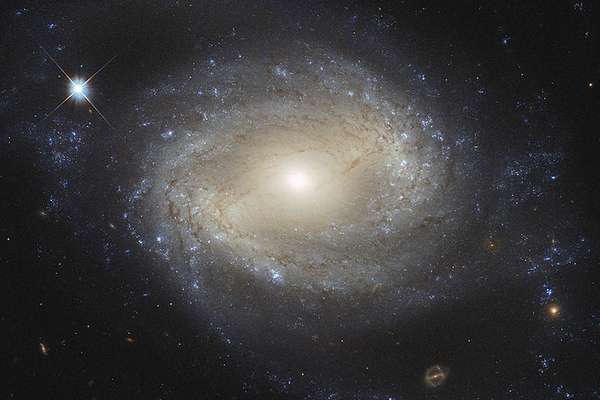Our understandings of the formation and beginnings of the universe suggest that a black hole with such a huge mass shouldn't actually have been able to form, scientists say.
"This is the only object we have observed from this era," said Robert Simcoe, the Francis L. Friedman professor of physics at MIT's Kavli Institute for Astrophysics and Space Research. "It has an extremely high mass, and yet the universe is so young that this thing shouldn't exist.
"The universe was just not old enough to make a black hole that big. It's very puzzling."
The astronomer who found the strange black hole said that there's no way of explaining how a black hole would be able to pick up such mass, and that it might challenge out current understandings of how black holes form. "Gathering all this mass in fewer than 690 million years is an enormous challenge for theories of supermassive black hole growth," said Eduardo Bañados, the Carnegie scientist who spotted it.
Even in the most generous and optimistic estimate of the formation of black holes, creating such a massive one in such a relatively short period of time would be impossible. That suggests that another, entirely unknown, process was happening at the same time.
"If you start with a seed like a big star, and let it grow at the maximum possible rate, and start at the moment of the Big Bang, you could never make something with 800 million solar masses – it's unrealistic," Professor Simcoe said. "So there must be another way that it formed. And how exactly that happens, nobody knows."
To allow the formation of such a massive black hole, the very early universe might have had been able to create very large black holes with masses reaching 100,000 times the mass of the sun. That's far bigger than any we know today.
The black hole is even more puzzling because of what was happening in the universe at that time. It was taking shape just as the universe was undergoing a fundamental switch – one that saw the universe turn from being a misty cloud of hydrogen gas into a space where the very first stars were switch on.
"What we have found is that the universe was about 50/50 – it's a moment when the first galaxies emerged from their cocoons of neutral gas and started to shine their way out," said Professor Simcoe. "This is the most accurate measurement of that time, and a real indication of when the first stars turned on."
When the universe began, it was like a very hot soup of extremely energetic but formless particles. As the universe expanded in size, those particles cooled down, and as they did they formed into a neutral hydrogen gas during which it was completely dark.
Then gravity began to squash down matter into the first stars and galaxies, then creating light in the form of photons. Stars then switched on and reacted with the swirling hydrogen, beginning of process of re-ionization.
The quasar that made its way to Earth from the black hole began its life at that very important part of the history of the universe. That helped scientists estimate that the stars turned on roughly when it began its journey – about 696 million years after the big bang.
"This adds to our understanding of our universe at large because we've identified that moment of time when the universe is in the middle of this very rapid transition from neutral to ionized," said Professor Simcoe. "We now have the most accurate measurements to date of when the first stars were turning on."
More about: #Blackhole
















































